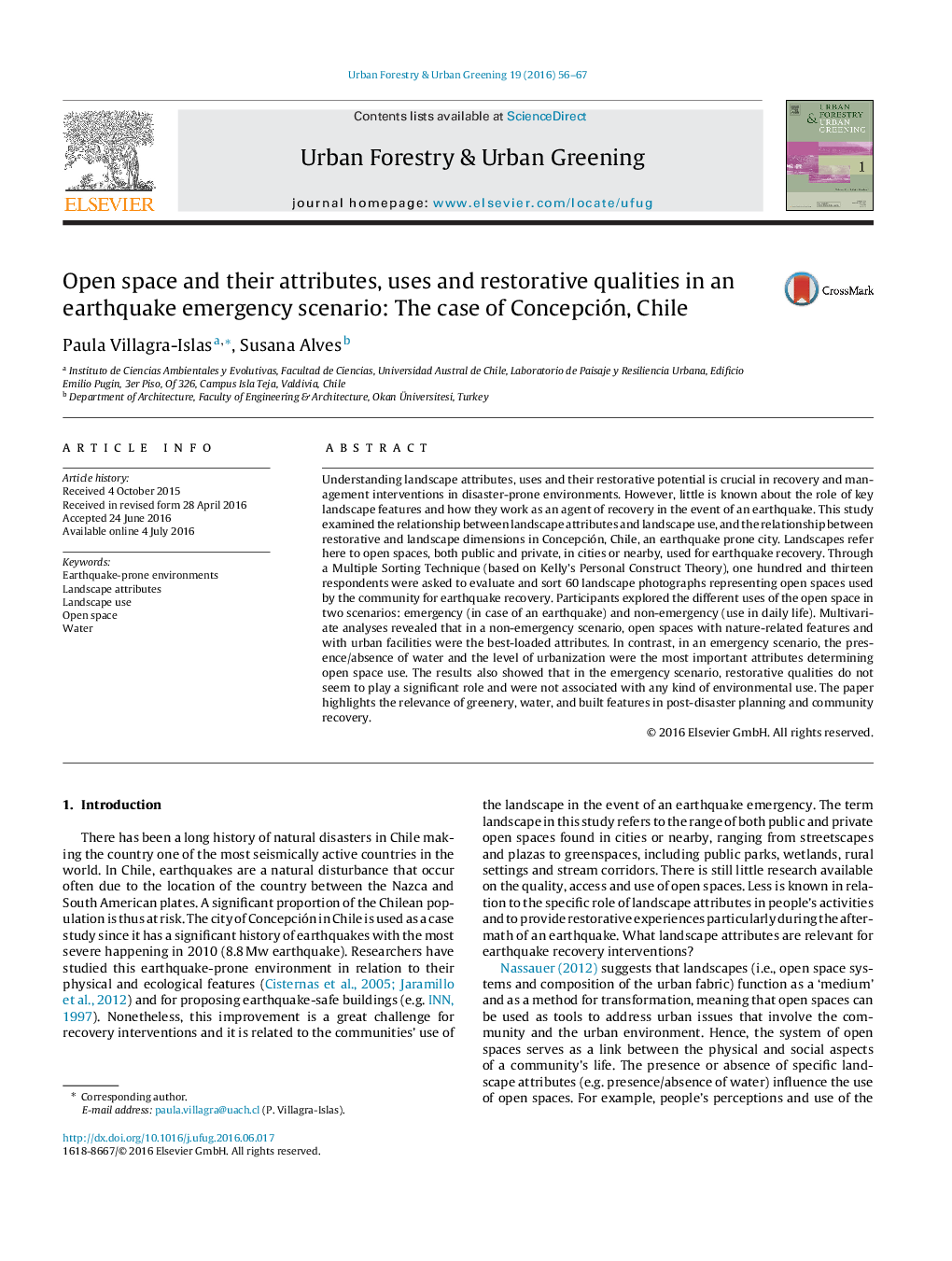| Article ID | Journal | Published Year | Pages | File Type |
|---|---|---|---|---|
| 93915 | Urban Forestry & Urban Greening | 2016 | 12 Pages |
•South American urban residents consider restorative landscapes to have nature, design and access confirming past studies in perceptions of restorativeness.•After an earthquake, urban landscapes with water are considered critical for survival by local residents.•Restorative qualities, after an earthquake, do not play a significant role in landscape use.
Understanding landscape attributes, uses and their restorative potential is crucial in recovery and management interventions in disaster-prone environments. However, little is known about the role of key landscape features and how they work as an agent of recovery in the event of an earthquake. This study examined the relationship between landscape attributes and landscape use, and the relationship between restorative and landscape dimensions in Concepción, Chile, an earthquake prone city. Landscapes refer here to open spaces, both public and private, in cities or nearby, used for earthquake recovery. Through a Multiple Sorting Technique (based on Kelly’s Personal Construct Theory), one hundred and thirteen respondents were asked to evaluate and sort 60 landscape photographs representing open spaces used by the community for earthquake recovery. Participants explored the different uses of the open space in two scenarios: emergency (in case of an earthquake) and non-emergency (use in daily life). Multivariate analyses revealed that in a non-emergency scenario, open spaces with nature-related features and with urban facilities were the best-loaded attributes. In contrast, in an emergency scenario, the presence/absence of water and the level of urbanization were the most important attributes determining open space use. The results also showed that in the emergency scenario, restorative qualities do not seem to play a significant role and were not associated with any kind of environmental use. The paper highlights the relevance of greenery, water, and built features in post-disaster planning and community recovery.
